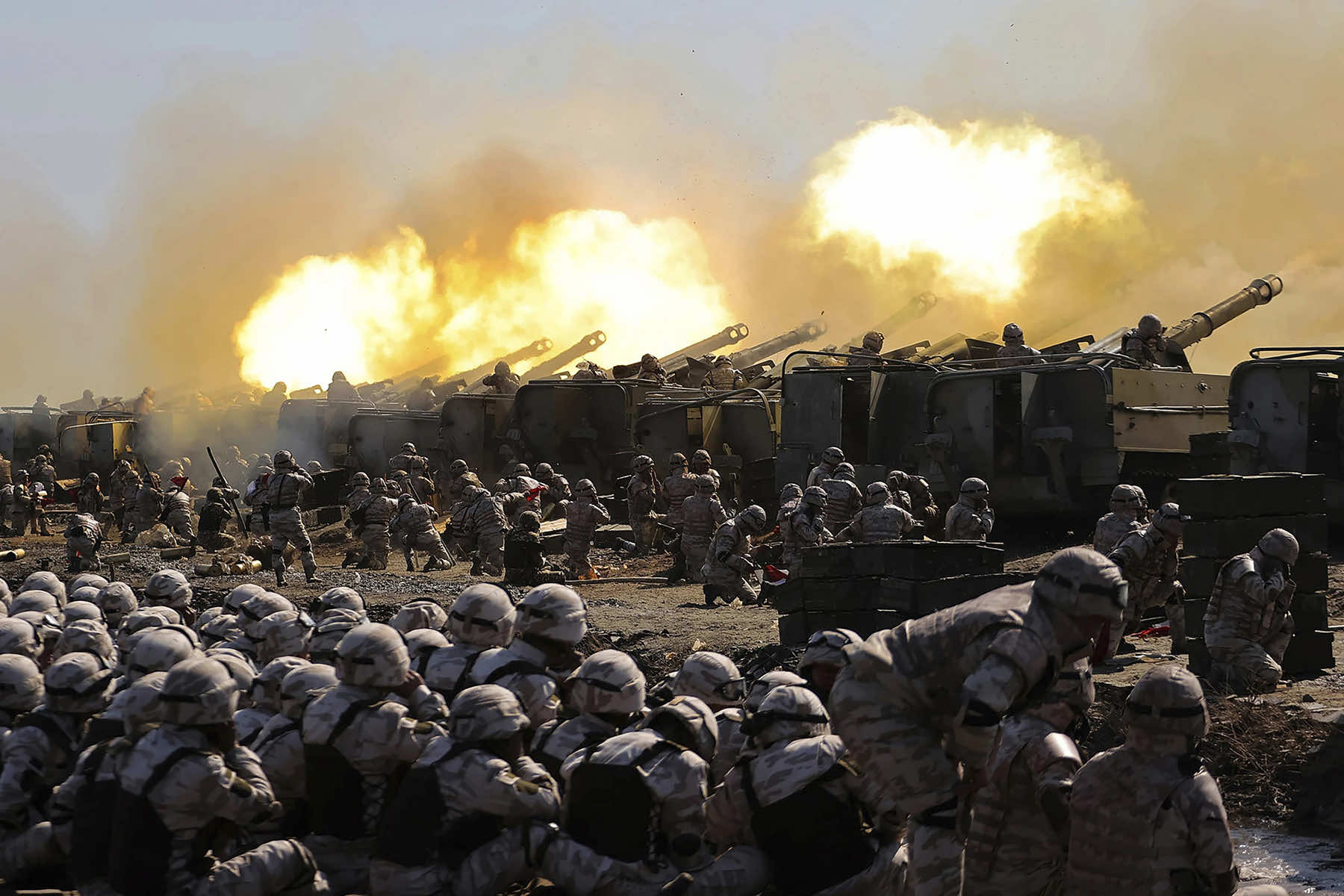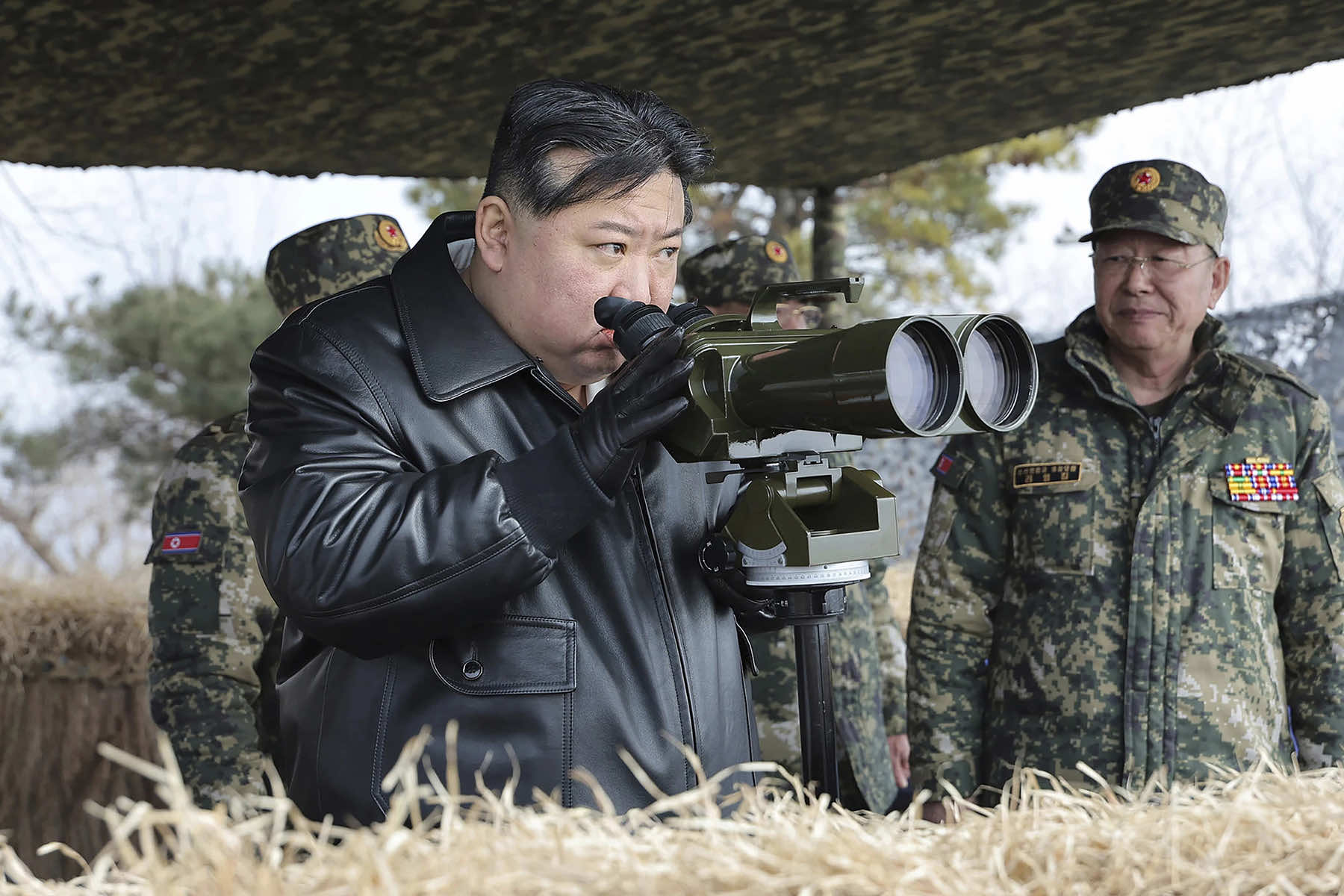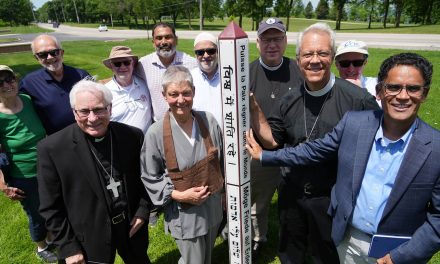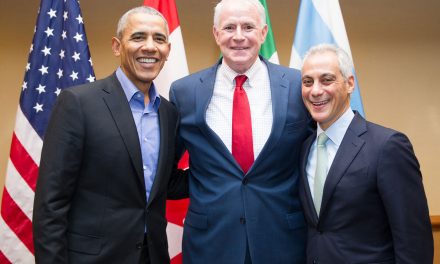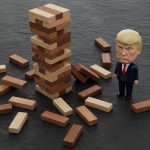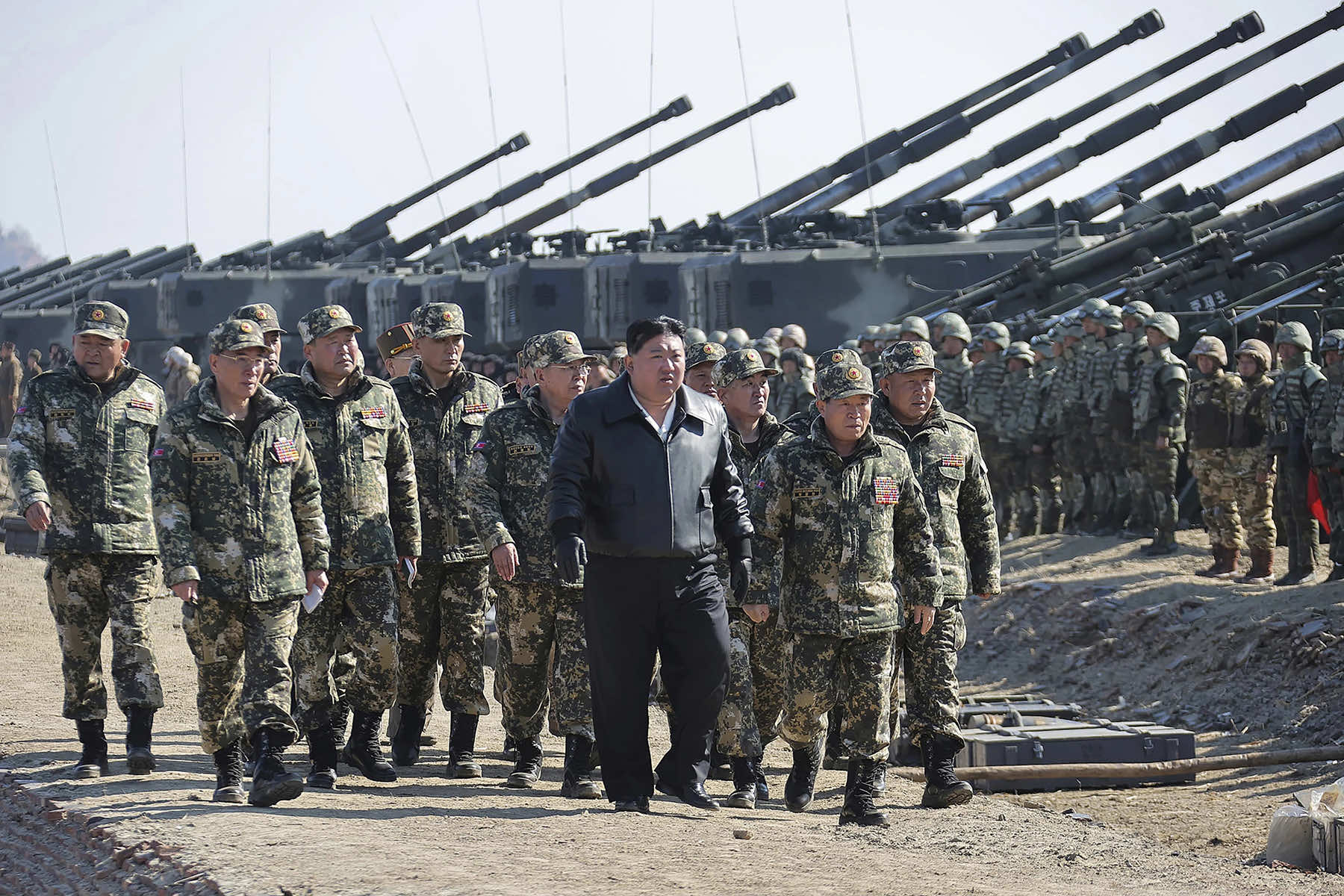
North Korean leader Kim Jong Un supervised artillery firing drills in March aimed at boosting combat readiness. The drills involved frontline artillery units, whose weapons place Seoul, the South Korean capital, in their striking range, according to North’s official Korean Central News Agency.
Kim said artillery units must “take the initiative with merciless and rapid strikes at the moment of their entry into an actual war.”
The North Korean drills in March, and again in August, followed corresponding joint exercises between South Korea and the United States. Kim said that such military training was regarded as a rehearsal for an invasion.
The military capabilities of the Democratic People’s Republic of Korea (DPRK) have long been a topic of intense scrutiny and concern for global security analysts, particularly regarding its nuclear weapons program. However, its conventional artillery remains a significant threat to the Republic of Korea (ROK).
North Korea’s focus on artillery dates back to the Korean War (1950-1953), during which artillery played a crucial role in the conflict. Since then, the DPRK has continued to prioritize the development and expansion of its artillery forces as a central component of its military strategy.
That focus was driven by several factors, including the need to compensate for technological and numerical disadvantages in other military domains, such as air power and naval capabilities. Over the decades, North Korea has amassed one of the largest artillery arsenals in the world.
Estimates suggest that the DPRK possesses over 10,000 artillery pieces, including towed artillery, self-propelled guns, and multiple rocket launchers. The weapons range from older, Soviet-era systems to more modern and indigenously developed platforms – based on reversed engineered technology from China or stolen from Western militaries.
The diversity and sheer number of the systems make North Korean artillery a critical element of the country’s military deterrent. One of the most alarming aspects of North Korea’s artillery is its strategic placement along the Demilitarized Zone (DMZ), which separates North and South Korea.
The DMZ is only about 30 miles from Seoul, the capital of South Korea, which is home to over 10 million people. The proximity of North Korean artillery to such a densely populated urban center significantly amplifies the threat.
North Korean artillery includes systems with a wide range of capabilities. For instance, the Koksan 170mm self-propelled gun has a maximum range of approximately about 25 miles with conventional munitions and can reach even further with rocket-assisted projectiles.
Additionally, the DPRK’s multiple rocket launchers, such as the 240mm BM-25 and 300mm KN-09, have ranges that extend up to 124 miles. The systems can deliver a high volume of firepower rapidly, making them particularly devastating in a concentrated attack.
The potential human and economic cost of a North Korean artillery barrage on South Korea would be staggering. Given the population density of Seoul and its surrounding areas, even a short-duration artillery attack could result in thousands of casualties.
Civilian infrastructure, including hospitals, schools, and residential buildings, would be highly vulnerable. Key economic assets, such as corporate headquarters, financial institutions, and industrial facilities, would also be severely damaged or destroyed.
A RAND Corporation study produced in 2020 estimated that a full-scale North Korean artillery attack on Seoul could result in tens of thousands of casualties within the first hour alone. The economic impact would be equally catastrophic, potentially disrupting South Korea’s economy, which is the 10th largest in the world. Such an attack would also have profound global implications, given South Korea’s integral role in global supply chains, particularly in the electronics and automotive sectors.
Beyond the immediate physical and economic damage, the threat of North Korean artillery serves as a powerful tool of psychological warfare. The mere presence of the arsenal exerts constant pressure on South Korean society and its government. It also highlights the fragility of peace on the Korean Peninsula and the ever-present risk of conflict.
North Korea leverages that threat as part of its broader deterrence strategy. By maintaining the capability to inflict massive damage on South Korea quickly, the DPRK hopes to deter preemptive strikes and military interventions by the United States and its allies. The strategy is based on the principle of mutually assured destruction (MAD), where the cost of initiating conflict would be prohibitively high for all parties involved.
In response to the threat posed by North Korean artillery, South Korea and its allies, particularly the United States, have developed a range of countermeasures. They include advanced surveillance and reconnaissance systems designed to detect and track North Korean artillery movements and preparations. Additionally, the ROK military has invested in counter-battery radar systems and precision-guided munitions capable of targeting and neutralizing North Korean artillery positions.
One of the key components of South Korea’s defense strategy is the Korea Air and Missile Defense (KAMD) system. This multi-layered defense network is designed to intercept and destroy incoming artillery shells, rockets, and missiles. The KAMD system integrates various missile defense systems, including the Patriot Advanced Capability-3 (PAC-3) and the Terminal High Altitude Area Defense (THAAD) systems, to provide a comprehensive shield against aerial threats.
South Korea has also enhanced its own artillery capabilities, with an emphasis on rapid counter-battery fire. The ROK Army’s K9 Thunder self-propelled howitzer, for example, is capable of firing 155mm shells with high precision and rapid response time. The capabilities are complemented by joint military exercises with the United States, which focus on improving interoperability and readiness to respond to North Korean artillery attacks.
While military preparedness is crucial, diplomatic efforts remain an essential component of addressing the threat posed by North Korean artillery. The international community, including the United Nations, has engaged in various initiatives aimed at de-escalating tensions on the Korean Peninsula and promoting dialogue between the two Koreas.
The Panmunjom Declaration, signed by North and South Korean leaders in April 2018, marked a significant step towards reducing military tensions. The agreement included provisions for the cessation of hostile activities and the establishment of buffer zones along the DMZ. Unfortunately, the implementation of the measures has faced numerous challenges, and the threat of artillery remains a persistent concern.
North Korea views any military exercises between South Korea and U.S. forces as a major security threat, calling them a preparation to launch attacks on the North. Seoul and Washington officials have always stated that their drills were defensive in nature.
North Korea sharply accelerated its missile testing activities since 2022, as part of an effort to develop more powerful nuclear-capable weapons that can target the U.S. mainland. The South Korean and U.S. militaries have expanded their drills proportionally in response.
Experts say North Korea likely aims to use a modernized arsenal to win sanctions relief from the United States when diplomacy restarts. They expected North Korea will continue to increase its weapons tests and dial-up warlike rhetoric this year, as the United States and South Korea hold major elections.
MI Staff (Korea), with Hyung-Jin Kim
KCNA – Korean Central News Agency / Korean News Service (via AP) and PKphotograph, F11photo, Sayan Uranan (via Shutterstock)
- Exploring Korea: Stories from Milwaukee to the DMZ and across a divided peninsula
- A pawn of history: How the Great Power struggle to control Korea set the stage for its civil war
- Names for Korea: The evolution of English words used for its identity from Gojoseon to Daehan Minguk
- SeonJoo So Oh: Living her dream of creating a "folded paper" bridge between Milwaukee and Korean culture
- A Cultural Bridge: Why Milwaukee needs to invest in a Museum that celebrates Korean art and history
- Korean diplomat joins Milwaukee's Korean American community in celebration of 79th Liberation Day
- John T. Chisholm: Standing guard along the volatile Korean DMZ at the end of the Cold War
- Most Dangerous Game: The golf course where U.S. soldiers play surrounded by North Korean snipers
- Triumph and Tragedy: How the 1988 Seoul Olympics became a battleground for Cold War politics
- Dan Odya: The challenges of serving at the Korean Demilitarized Zone during the Vietnam War
- The Korean Demilitarized Zone: A border between peace and war that also cuts across hearts and history
- The Korean DMZ Conflict: A forgotten "Second Chapter" of America's "Forgotten War"
- Dick Cavalco: A life shaped by service but also silence for 65 years about the Korean War
- Overshadowed by conflict: Why the Korean War still struggles for recognition and remembrance
- Wisconsin's Korean War Memorial stands as a timeless tribute to a generation of "forgotten" veterans
- Glenn Dohrmann: The extraordinary journey from an orphaned farm boy to a highly decorated hero
- The fight for Hill 266: Glenn Dohrmann recalls one of the Korean War's most fierce battles
- Frozen in time: Rare photos from a side of the Korean War that most families in Milwaukee never saw
- Jessica Boling: The emotional journey from an American adoption to reclaiming her Korean identity
- A deportation story: When South Korea was forced to confront its adoption industry's history of abuse
- South Korea faces severe population decline amid growing burdens on marriage and parenthood
- Emma Daisy Gertel: Why finding comfort with the "in-between space" as a Korean adoptee is a superpower
- The Soul of Seoul: A photographic look at the dynamic streets and urban layers of a megacity
- The Creation of Hangul: A linguistic masterpiece designed by King Sejong to increase Korean literacy
- Rick Wood: Veteran Milwaukee photojournalist reflects on his rare trip to reclusive North Korea
- Dynastic Rule: Personality cult of Kim Jong Un expands as North Koreans wear his pins to show total loyalty
- South Korea formalizes nuclear deterrent strategy with U.S. as North Korea aims to boost atomic arsenal
- Tea with Jin: A rare conversation with a North Korean defector living a happier life in Seoul
- Journalism and Statecraft: Why it is complicated for foreign press to interview a North Korean defector
- Inside North Korea’s Isolation: A decade of images show rare views of life around Pyongyang
- Karyn Althoff Roelke: How Honor Flights remind Korean War veterans that they are not forgotten
- Letters from North Korea: How Milwaukee County Historical Society preserves stories from war veterans
- A Cold War Secret: Graves discovered of Russian pilots who flew MiG jets for North Korea during Korean War
- Heechang Kang: How a Korean American pastor balances tradition and integration at church
- Faith and Heritage: A Pew Research Center's perspective on Korean American Christians in Milwaukee
- Landmark legal verdict by South Korea's top court opens the door to some rights for same-sex couples
- Kenny Yoo: How the adversities of dyslexia and the war in Afghanistan fueled his success as a photojournalist
- Walking between two worlds: The complex dynamics of code-switching among Korean Americans
- A look back at Kamala Harris in South Korea as U.S. looks ahead to more provocations by North Korea
- Jason S. Yi: Feeling at peace with the duality of being both an American and a Korean in Milwaukee
- The Zainichi experience: Second season of “Pachinko” examines the hardships of ethnic Koreans in Japan
- Shadows of History: South Korea's lingering struggle for justice over "Comfort Women"
- Christopher Michael Doll: An unexpected life in South Korea and its cross-cultural intersections
- Korea in 1895: How UW-Milwaukee's AGSL protects the historic treasures of Kim Jeong-ho and George C. Foulk
- "Ink. Brush. Paper." Exhibit: Korean Sumukhwa art highlights women’s empowerment in Milwaukee
- Christopher Wing: The cultural bonds between Milwaukee and Changwon built by brewing beer
- Halloween Crowd Crush: A solemn remembrance of the Itaewon tragedy after two years of mourning
- Forgotten Victims: How panic and paranoia led to a massacre of refugees at the No Gun Ri Bridge
- Kyoung Ae Cho: How embracing Korean heritage and uniting cultures started with her own name
- Complexities of Identity: When being from North Korea does not mean being North Korean
- A fragile peace: Tensions simmer at DMZ as North Korean soldiers cross into the South multiple times
- Byung-Il Choi: A lifelong dedication to medicine began with the kindness of U.S. soldiers to a child of war
- Restoring Harmony: South Korea's long search to reclaim its identity from Japanese occupation
- Sado gold mine gains UNESCO status after Tokyo pledges to exhibit WWII trauma of Korean laborers
- The Heartbeat of K-Pop: How Tina Melk's passion for Korean music inspired a utopia for others to share
- K-pop Revolution: The Korean cultural phenomenon that captivated a growing audience in Milwaukee
- Artifacts from BTS and LE SSERAFIM featured at Grammy Museum exhibit put K-pop fashion in the spotlight
- Hyunjoo Han: The unconventional path from a Korean village to Milwaukee’s multicultural landscape
- The Battle of Restraint: How nuclear weapons almost redefined warfare on the Korean peninsula
- Rejection of peace: Why North Korea's increasing hostility to the South was inevitable
- WonWoo Chung: Navigating life, faith, and identity between cultures in Milwaukee and Seoul
- Korean Landmarks: A visual tour of heritage sites from the Silla and Joseon Dynasties
- South Korea’s Digital Nomad Visa offers a global gateway for Milwaukee’s young professionals
- Forgotten Gando: Why the autonomous Korean territory within China remains a footnote in history
- A game of maps: How China prepared to steal Korean history to prevent reunification
- From Taiwan to Korea: When Mao Zedong shifted China’s priority amid Soviet and American pressures
- Hoyoon Min: Putting his future on hold in Milwaukee to serve in his homeland's military
- A long journey home: Robert P. Raess laid to rest in Wisconsin after being MIA in Korean War for 70 years
- Existential threats: A cost of living in Seoul comes with being in range of North Korea's artillery
- Jinseon Kim: A Seoulite's creative adventure recording the city’s legacy and allure through art
- A subway journey: Exploring Euljiro in illustrations and by foot on Line 2 with artist Jinseon Kim
- Seoul Searching: Revisiting the first film to explore the experiences of Korean adoptees and diaspora





